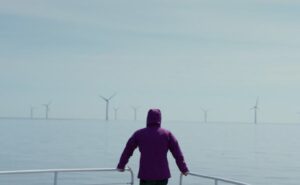The moon landing on 20 July 1969 was a remarkable achievement that was made possible by a huge technological push and a major investment in the space program by the United States.
In 1961, President John F Kennedy pledged to put a human being on the moon for the first time and return them safely by the time the decade was over. Half a century ago it was a reality.
Historic achievements such as the US moon landing are made possible because of governments setting the vision and then making the resources available to get the job done. And after being started at the highest level, the moon landing ultimately involved some of the finest minds of its generation.
It’s no surprise that the sheer scope of the issues that needed to be managed was vast. One small example can be seen in a media release that was drafted in case the astronauts did not make it back from space, titled In Event of Moon Disaster.
What is less well known these days is the immense opposition the idea faced at the time. Even a decade after the event at the end of the 1970s, a poll suggested that less than half (47 per cent) of Americans thought the mission was worth the money and the trouble.
Many Republicans opposed because they saw it as smart politics. Many traditional supporters of the Democrats opposed it because they felt the money could have been better spent on social projects a lot closer to home. It took decades for the political acrimony to fade.
Back in 2019, some of the finest minds of our generation are working on innovation of a different kind: clean energy.
Solar power technology was improved and used in the space program, but it has come a long way since then. This week the industry comes together at The Australian Clean Energy Summit in Sydney to work out how to keep the momentum going and navigate the latest round of political challenges.
There is much to celebrate: More than two million homes now have solar power installed, and more than 20 per cent of our electricity now comes from hydro, wind, solar and bioenergy. Along the way clean energy has generated billions in investment dollars, with the promise of hundreds of billions more to come.
In Australia we’re in the messy middle section of an energy transition from coal to clean energy. Like the space program, renewable energy has generated more than its fair share of political controversy – something the industry has been at pains to avoid.
Opponents have been telling us for the last two decades that whatever the next step happens to be for renewables, it is too difficult. It will cost too much, or it won’t be technically feasible. As our industry has shown over and over again, this is absolute rubbish.
Renewable energy is now the cheapest kind of power generation we have available. It is predictable days in advance and has fewer unexpected outages compared to fossil fuels, which dropped out dozens of times last summer when we needed them most.
But one thing clean energy is missing is the clear direction US President John F Kennedy gave his country which made the moon landing possible. Our national Renewable Energy Target for example runs out in 2020 and there’s no policy to replace it. We need policy and vision to encourage more low-cost clean energy; to create more jobs in regional areas of the country.
Australia’s abundant world-class wind, solar, bioenergy and coastal rainfall mean a low-cost, resilient clean energy system is within our grasp. The benefits at the end of the rainbow are compelling. According to McKinsey and Co, we can attract manufacturers back to our shores, drawn by low-cost clean energy which could cut power bills by about 30 per cent.
Like NASA in the 1960s, we have thousands of innovators working on this project. Current priorities include next-generation battery storage technology and the conversion of renewable energy to green hydrogen. This means renewables can be exported, like we currently do with natural gas, and maybe even used as gas for manufacturing and heating at home.
So, a full 50 years after the moon landing and with Australia’s many extraordinary achievements to date, the idea that a clean energy future is somehow beyond us is actually beyond absurd. Frankly it’s insulting.
Just after winning the 2019 election, Prime Minister Scott Morrison said: “How good is Australia!”
He’s absolutely right. With a bit of big picture thinking and policy leadership, we’re definitely good enough to deliver cheaper power prices, independence and prosperity through an economy powered by clean energy. There will be plenty of challenges along the way. But it’s not like we’re putting a man on the moon or anything.
Kane Thornton is the CEO of the Clean Energy Council








